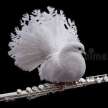
Speed skating
• Definition of speed skating
Speed skating is a competitive winter sport that involves racing on ice using special skates. Skaters compete against each other in races of various distances, with the goal of completing the course in the shortest amount of time possible.
• Brief history of speed skating
Speed skating has been around for hundreds of years, with the earliest recorded instances of people skating on frozen water dating back to the 13th century in Scandinavia. The first formal speed skating competitions were held in the Netherlands in the mid-19th century, with the first Dutch championships taking place in 1863.
The sport quickly gained popularity in other countries in Europe, and in 1892, the International Skating Union (ISU) was founded to govern the sport and standardize the rules. The first official world championships in speed skating were held in 1893, and the first Olympic speed skating event was held at the 1924 Winter Olympics in Chamonix, France.
Over the years, the sport has evolved and different types of speed skating have emerged. Long track speed skating, which takes place on a 400-meter oval track, has been a part of the Olympic program since its inception. Short track speed skating, which involves racing on a smaller, 111-meter track with tighter turns, was introduced as an official Olympic sport in 1992. Marathon speed skating, which involves skating long distances outdoors, is also a popular form of the sport.
Today, speed skating is a highly competitive and popular sport around the world, with many countries hosting national championships and participating in international competitions like the World Cup and the World Championships
Types of speed skating
Long track speed skating: This is the most common type of speed skating and involves skating around a 400-meter oval track. Races are usually held in distances of 500m, 1000m, 1500m, 3000m, 5000m, and 10,000m.
Short track speed skating: In this type of skating, skaters race on a smaller oval track that is typically 111.12 meters in length. Races are usually held in distances of 500m, 1000m, and 1500m.
Marathon skating: Marathon skating involves racing over long distances, usually 25 kilometers or more. This type of skating is usually held outdoors and requires skaters to be in good physical condition.
Inline speed skating: Inline speed skating involves racing on inline skates (rollerblades) rather than ice skates. Races are held on a variety of surfaces, including concrete and indoor rinks.
Ice cross downhill: This type of speed skating is also known as “crashed ice” and involves racing downhill on an ice track with steep drops, sharp turns, and obstacles.
Nordic skating: Nordic skating involves skating on natural ice in the great outdoors. This type of skating can take place on lakes, rivers, or even the ocean and is popular in Scandinavia and other cold-weather regions.
Equipment and Clothing
Speed skating is a difficult, high-speed sport that needs specific gear in order to protect athletes and improve performance. The following are the necessities for speed skating:
Speed skates are long, thin, and have a low-cut ankle. They are made for efficiency and speed. To minimise drag and enhance skate skill, they are comprised of lightweight materials like carbon fibre and Kevlar.
Speed skates often have longer, narrower blades than figure skates, resulting in better glide and speed. For optimal speed and control, they are honed to a razor-like edge.
Helmet: During speed skating, a helmet is necessary to protect the head. It need to be snugly fitting and approved for high-impact sports.
Skin suit: Speed skating suits are comprised of thin, elastic textiles that cling snugly to the body. This reduces air resistance and provides the skater with the most range of motion possible. They are often constructed of synthetic fabrics like Lycra and may include specific panels with an aerodynamic shape to lower drag.
Gloves: Gloves increase grip on the ice and offer warmth and protection for the hands. Maximum dexterity and grip are made possible by the lightweight, breathable materials used in speed skating gloves.
Goggles: Although giving sharp vision, goggles shield the eyes from wind and ice particles. In order to avoid fogging, they are frequently manufactured of shatterproof polycarbonate and may include anti-fog coatings
Neck guard: In the case of a fall, a neck guard, which is a padded collar, can assist shield the neck from harm.
Pads for the knees and elbows: Padded knee and elbow pads protect the joints from blows during slips and falls.
Ankle guards: During sudden stops and spins at high speeds, ankle guards offer additional support and protection for the ankle joint.
In order to achieve maximum speed, control, and safety on the ice, speed skating gear and apparel should be light, flexible, and protective.






Comments
There are no comments for this story
Be the first to respond and start the conversation.